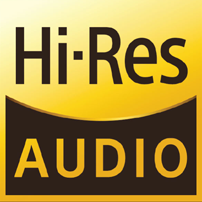
What is “Hi-Res Audio” ?
The reality is it’s a bit more smoke and mirrors than a technological leap forward.
The definition of Hi-Res Audio was announced on June 12th 2014 in a statement from JEITA Japan that put forward specific guidelines as to what qualified as Hi-Res Audio.
JAS states that to qualify as “Hi-Res” the following specifications must be met on the recording, reproduction and signal transition process:
- Microphone response performance: 40 kHz or above during recording
- Amplification performance: 40 kHz or above
- Speaker and headphone performance: 40 kHz or above
- Recording format: Capability of recording using the 96kHz/24bit format or above
- I/O (Interface): Input/output interface with a performance of 96kHz/24bit or above
- Decoding: File playability of 96kHz/24bit or above (FLAC and WAV both required) In the case of self-recording equipment, FLAC or WAV file is required as a minimum condition)
- Digital Signal Processing: DSP processing of 96kHz/24bit or above
- D/A conversion: Digital to analog conversion processing of 96 kHz/24 bits or above
- The listening evaluation process is to be organised.
- The listening evaluation process is added, and the final decision on the Hi-Res Audio product must be proven according to each company’s sound evaluation standard.
So if I put a set of “Hi-Res” speakers on my factory system everything will be better?
Your system may certainly sound better but it won’t necessarily make it qualify as Hi-Res, if your head unit or amplifier (if you are using one) or your recording does not meet the specifications (as listed 1 to 10) then it is not Hi-Res. It;s a bit like putting F-1 fuel in your daily driver, does the adding of race fuel make the car a race car?